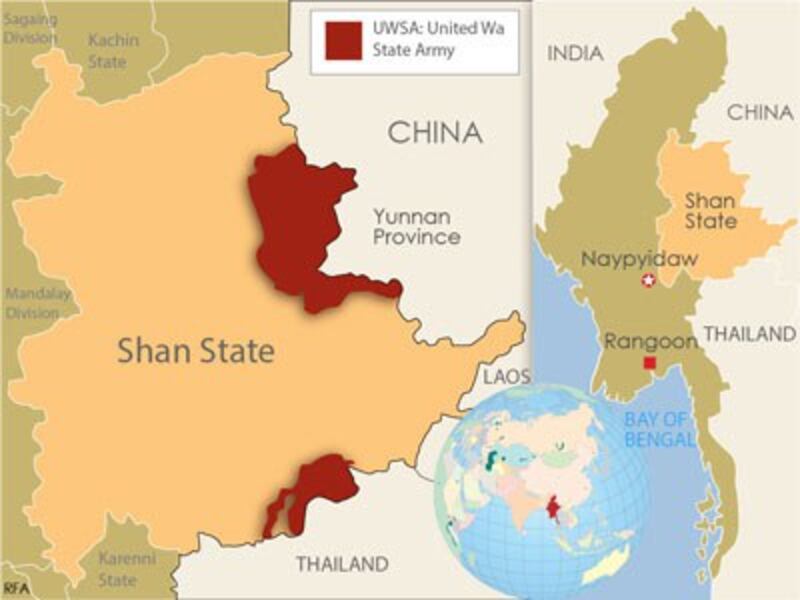China has provided missile-equipped helicopters to Burma’s largest armed ethnic rebel group, a report said this week, in a move that one Burmese military analyst said could hurt bilateral ties.
Monday’s report by U.K.-based intelligence monitor Jane’s Information Group said China had delivered several Mil Mi-17 ‘Hip’ helicopters to the United Wa State Army (UWSA) in late February and early March, citing sources from the Burmese government and the military wing of an ethnic rebel group.
The UWSA, which numbers some 30,000 full-and part-time fighters and controls towns along the Chinese and Thai borders in northeastern Burma’s Shan state, is in a fragile cease-fire with the Burmese military.
The helicopters, armed with TY-90 air-to-air missiles, were sent to the UWSA-administered area by way of Laos, instead of coming directly from China, the report said.
The ethnic minority military source said the UWSA had procured five helicopters, while the Burmese military source could only confirm two had been delivered, according to the report.
The helicopters are the UWSA’s first acquisition of rotary-wing capability and could provide a “serious deterrent” to the Burmese military, it said.
'Could damage relations'

While Jane’s did not say whether Beijing had sold the armed helicopters or provided them at no cost, analyst Aung Kyaw Zaw, who is based on the Burma-China border, said he personally felt it was “possible” that China sold them to the UWSA, rather than “giving them away for free.”
It was difficult to say which groups or countries sell weapons to Burmese armed ethnic groups, he said, adding that the sale to the UWSA “could damage the relationship between China and Burma.”
The Wa army “needs something to protect themselves” following the Burmese military’s advances on other ethnic rebel groups in the past year, he said.
He said the Burmese military is eyeing areas controlled by Kachin and Shan rebels in order to eventually prepare an offensive against the UWSA.
“The government has weapons that they could fire from Lwelan [in Shan state] to the UWSA headquarters at Panshang,” he said.
Aung Kyaw Zaw said that, aside from the helicopters, there were also reports that China had sent a large number of armaments and military-use vehicles to the China-Burma border in Sept. 2012, and that new weapons had recently appeared in the area.
“New weapons that we hadn’t ever seen before were seen at an anniversary celebration of an armed group that is based in the China-Burma border area,” he said, without naming the group.
The Wa military has about 30,000 soldiers, and some of their equipment is more advanced than that of the Burmese military, he said.
The UWSA, formed by members of the Chinese-speaking Wa ethnic group, were one of several ethnic militias founded after the 1989 breakup of the Burmese Communist Party.
Despite its professed policy of noninterference, military analysts say China has, albeit unofficially, long been the largest supplier of weapons to the Wa.
Burma and the United States have long said the UWSA funds its activities through heroin and methamphetamine production, and the group is considered the biggest narcotics organization in Southeast Asia.
Reported by RFA’s Burmese Service. Translated by Khet Mar. Written in English by Rachel Vandenbrink.
